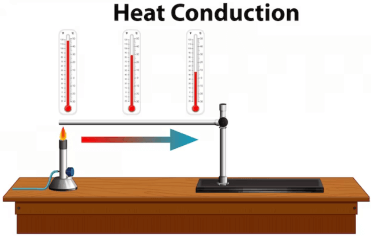Question
a.
Offset
b.
Perpendicular distance
c.
Side distance
d.
Perpendicular offset
Posted under Surveying
Interact with the Community - Share Your Thoughts
Uncertain About the Answer? Seek Clarification Here.
Understand the Explanation? Include it Here.
Q. What is the lateral distance of an object or ground feature measured from a survey line?
Similar Questions
Explore Relevant Multiple Choice Questions (MCQs)
Q. An offset is laid out 6° from its true direction on the field. Find the resulting displacement of the plotted point on the paper in a direction parallel to the chain line? (Given the length of offset is 10 m and scale is 5 m to 1 cm)
View solution
Q. An offset is laid out 6° from its true direction on the field. Find the resulting displacement of the plotted point on the paper in a direction perpendicular to the chain line? (Given length of offset is 10 m and scale is 5 m to 1 cm)
View solution
Q. An offset is laid out 1° 30′ from its true direction on the field. Find the degree of accuracy with which the offset should be measured so that the maximum displacement of the point on the paper from both sources may be equal?
View solution
Q. An offset is measured with an accuracy of 1 in 40. If the scale of plotting is 1 cm = 20 m, find the limiting length of the offset so that the displacement of the point on the paper from both sources of error may not exceed 0.25 mm?
View solution
Q. What triangles are generally preferred to get good results in plotting?
View solution
Q. The line must run through level ground as possible is the condition to be fulfilled by survey lines or survey stations.
View solution
Q. The main lines should form well-conditioned triangles is the condition to be fulfilled by survey lines or survey stations.
View solution
Q. Survey lines must be as few as possible is the condition to be fulfilled by survey lines or survey stations.
View solution
Q. As far as possible main survey lines should pass through the obstacles to get know how many obstacles present.
View solution
Q. How many kinds of obstacles of chaining are there?
View solution
Q. Which of the following is not one among the three major kinds of obstacles of chaining?
View solution
Q. Both ends of the lines may be visible from intermediate points on the line. This case comes under which among the three kinds of obstacles to chaining?
View solution
Q. When it is possible to chain round the obstacle, i.e a pond, hedge etc. This case comes under which among the three kinds of obstacles to chaining?
View solution
Q. Both ends of the line may not be visible from intermediate points on the line. This case comes under which among the three kinds of obstacles to chaining?
View solution
Q. When it is not possible to chain round the obstacle e.g. a river. This case comes under which among the three kinds of obstacles to chaining?
View solution
Q. To continue a survey line AB past an obstacle, a line BC 100 m long was set out perpendicular to AB and from C angles BCD and BCE were set out at 60° and 45° respectively. Determine the lengths which must be chained off along CD in order that ED may be in AB produced?
View solution
Q. To continue a survey line AB past an obstacle, a line BC 100 m long was set out perpendicular to AB and from C angles BCD and BCE were set out at 60° and 45° respectively. Determine the lengths which must be chained off along CE in order that ED may be in AB produced?
View solution
Q. To continue a survey line AB past an obstacle, a line BC 300 m long was set out perpendicular to AB and from C angles BCD and BCE were set out at 60° and 45° respectively. Determine the obstructed length BE?
View solution
Q. If we select two points A and B on either side of the obstacle and equal perpendiculars AC and BD are set out. Then AB is equal to?
View solution
Q. The direction of a survey line can either be established with relation to _______
View solution
Recommended Subjects
Are you eager to expand your knowledge beyond Surveying? We've handpicked a range of related categories that you might find intriguing.
Click on the categories below to discover a wealth of MCQs and enrich your understanding of various subjects. Happy exploring!








